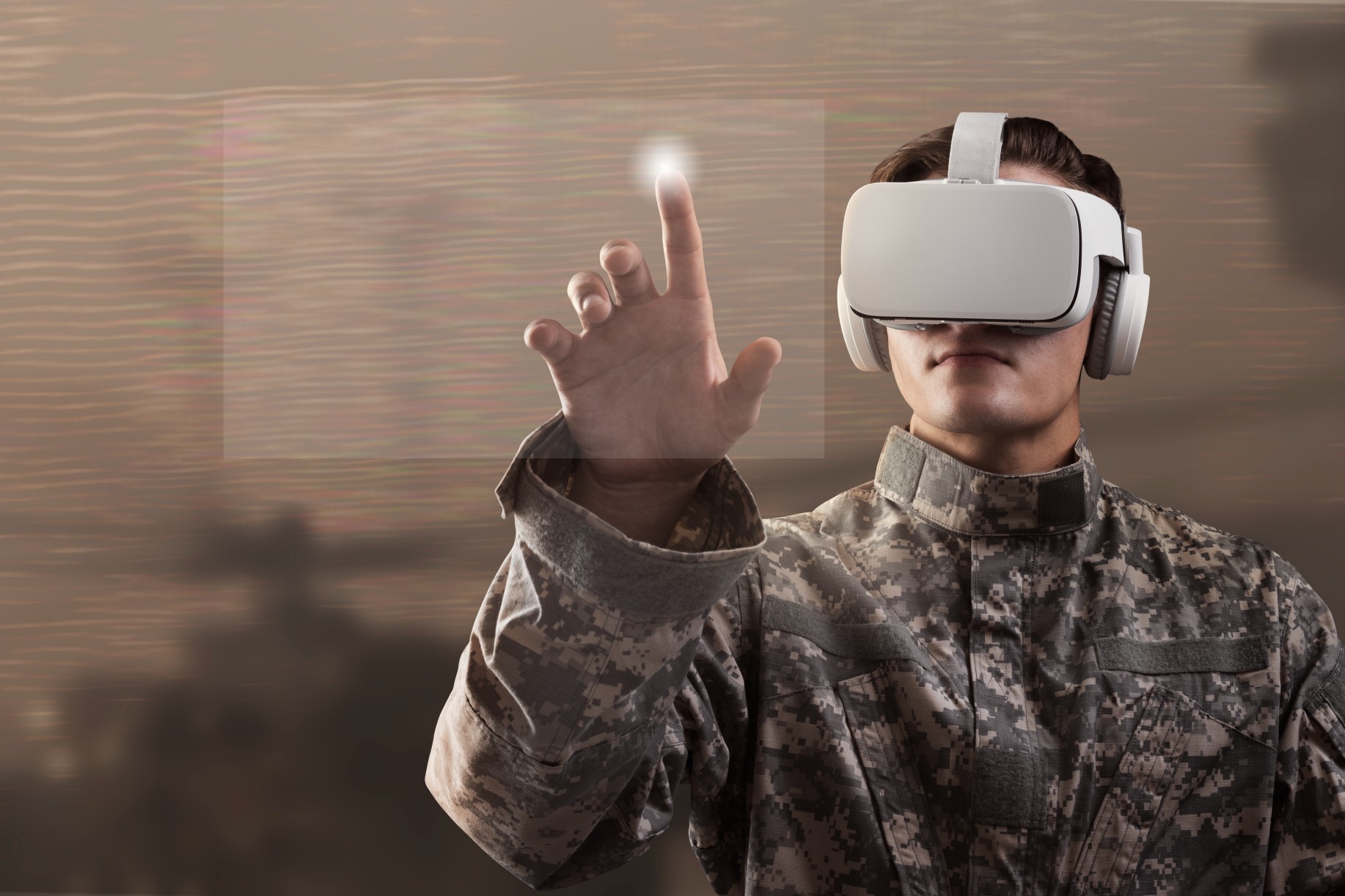Simulation Technologies – Revolutionizing Military Training with Virtual Reality and AI

The ability to simulate real-world combat scenarios, without the associated risks or costs, is transforming how military personnel are trained and prepared for modern warfare. Simulation technologies allow soldiers to immerse themselves in complex operational environments, experience realistic combat situations, and practice tactical decision-making in a safe, controlled setting. These technologies have rapidly evolved, incorporating innovations like virtual reality (VR), augmented reality (AR), and artificial intelligence (AI) to provide more dynamic and adaptive training experiences.
From flight simulators to battlefield strategy exercises, simulation technologies offer a versatile and cost-effective solution for training military forces. These simulations allow soldiers to practice and refine their skills in high-risk scenarios—urban warfare, aerial combat, disaster relief operations—without the need for live drills or physical deployments.
This blog will explore the growing importance of simulation technologies in defense, how these systems are being used to prepare soldiers for the challenges of modern warfare, and how platforms like AiDOOS are enabling defense organizations to develop cutting-edge simulation-based training programs.
Simulation technologies provide military forces with an essential tool for replicating real-world combat conditions in a virtual environment. These systems can simulate everything from weapon handling and tactical decision-making to large-scale combat operations, offering soldiers a realistic and immersive training experience. Here are some of the key areas where simulation technologies are transforming military training:
Flight Simulators and Aerial Combat Training: For decades, flight simulators have been used to train pilots in the operation of military aircraft. Modern simulators have evolved to include sophisticated AI-driven adversaries, immersive VR environments, and real-time analytics to assess a pilot's decision-making skills.
Pilots can train for a wide range of scenarios, including dogfights, air-to-ground strikes, and emergency landings, all while seated in a simulator. This not only reduces the risks associated with live training but also allows for more frequent and flexible practice.
Tactical Decision-Making Simulations: Ground forces benefit from simulation technologies that replicate battlefield conditions. Virtual reality (VR) and augmented reality (AR) systems allow soldiers to experience complex combat environments, where they must make rapid decisions under pressure. These simulations can include urban combat, hostage rescue missions, or large-scale tactical exercises, providing soldiers with the opportunity to refine their decision-making skills in a safe environment.
AI is often integrated into these simulations to create more realistic adversaries. AI-driven enemies can adapt to the soldier's tactics, providing an evolving challenge that mimics real-world combat scenarios.
War Games and Strategic Exercises: Simulation technologies are also used for war games and strategic exercises, where military commanders practice large-scale operational planning. These simulations allow officers to experiment with different strategies, anticipate enemy movements, and manage resources in a virtual battlefield.
By simulating the coordination of air, land, and sea assets in real time, war games help commanders develop their strategic decision-making skills and improve their ability to lead military operations across multiple domains.
Medical and Combat Support Simulations: Simulation technologies are increasingly being used to train medical personnel in battlefield trauma care. Medical simulators can replicate real-life combat injuries, allowing military medics to practice triage, emergency surgery, and patient stabilization in a high-pressure, simulated environment.
In addition to medical training, logistics support simulations are used to prepare personnel for the challenges of maintaining supply chains, managing resources, and ensuring that critical supplies reach frontline soldiers.
The rapid advancement of virtual reality (VR), augmented reality (AR), AI, and cloud computing has driven the evolution of military simulation technologies. Below are some of the key technologies that are revolutionizing the way soldiers are trained:
Virtual Reality (VR) and Augmented Reality (AR): VR immerses soldiers in a fully digital environment, allowing them to interact with virtual objects, landscapes, and adversaries as if they were physically present on the battlefield. AR, on the other hand, overlays digital elements onto the real world, providing real-time information or assistance during training exercises.
These technologies are used for everything from flight training to ground combat simulations. In VR-based flight simulators, for example, pilots experience the sensation of flying a real aircraft, complete with weather conditions, enemy engagements, and emergency scenarios. AR enhances situational awareness for ground troops by providing heads-up displays that show maps, enemy positions, or weapon data.
Artificial Intelligence (AI) and Machine Learning: AI plays a pivotal role in enhancing the realism and adaptability of military simulations. AI-driven adversaries can learn from a soldier's tactics, making the training environment more challenging and realistic. Additionally, AI-powered simulations can adapt in real-time, providing tailored training scenarios based on a soldier’s skill level and performance.
AI is also used to analyze performance data, providing instant feedback to trainees and helping instructors identify areas where improvement is needed.
Cloud-Based Simulation Platforms: Cloud computing has enabled military organizations to develop cloud-based simulation platforms, allowing for remote training and collaborative exercises. These platforms provide access to real-time simulations from any location, enabling soldiers stationed in different parts of the world to participate in joint training exercises.
Cloud-based systems also allow for faster updates to simulation content, ensuring that training programs remain relevant and reflect current operational needs.
Data Analytics for Performance Assessment: Data analytics is increasingly used to track performance metrics during simulation exercises. These analytics can measure everything from reaction times and decision-making speed to the accuracy of a soldier’s movements or the efficiency of resource management in a war game scenario.
By analyzing this data, commanders and trainers can assess a soldier's readiness and make data-driven decisions about where to focus future training efforts.
Mixed Reality Training Systems: Mixed reality combines elements of both VR and AR, allowing soldiers to train in a hybrid environment that blends real-world objects with digital simulations. This technology is particularly useful for combined arms training, where ground troops, air assets, and armored vehicles must coordinate their actions in complex combat environments.
Mixed reality systems provide a more comprehensive training experience, enabling soldiers to interact with both physical and digital elements during tactical exercises.
The integration of simulation technologies into military training programs offers several strategic advantages:
Risk-Free Training: Simulations allow soldiers to practice dangerous or high-risk maneuvers without the physical risks associated with live drills. This reduces the likelihood of injuries and equipment damage while allowing for more frequent and intense training.
Cost-Effective Solutions: Training in virtual environments reduces the costs associated with traditional training methods, such as ammunition, fuel, and equipment wear. Simulation technologies provide a scalable solution for training large numbers of personnel at a fraction of the cost of live exercises.
Real-Time Feedback and Adaptation: AI-powered simulations can provide real-time feedback, allowing soldiers to adjust their tactics and improve their performance during training. The ability to adapt simulations to the trainee’s skill level ensures that soldiers are continually challenged, enhancing their learning experience.
Enhanced Collaboration: Simulation platforms enable military forces to conduct joint training exercises across different locations, fostering collaboration between units. This is particularly useful for multinational coalition operations, where forces from different countries must train together to ensure interoperability.
AiDOOS provides defense contractors with access to a global network of specialists in AI, VR/AR, cloud computing, and data analytics. Through AiDOOS, military organizations can develop and deploy advanced simulation technologies that enhance training programs and improve soldier readiness.
For example, AiDOOS enables the creation of AI-powered simulations that adapt to a soldier’s actions and provide real-time feedback on performance. Additionally, AiDOOS supports the integration of cloud-based platforms, enabling remote simulation exercises and joint training across different geographies.
By leveraging the expertise provided by AiDOOS, defense organizations can ensure that their simulation technologies remain cutting-edge, scalable, and aligned with the latest advancements in military training.
The future of military training will increasingly rely on AI-driven simulations, VR/AR-based training environments, and real-time data analytics. These technologies will continue to evolve, providing more immersive, adaptive, and realistic training experiences for soldiers across all branches of the military.
As the technology behind simulation continues to advance, military forces will be able to simulate more complex operational environments, including cyber warfare, space-based operations, and hybrid warfare scenarios. The integration of cloud-based systems will allow for greater collaboration between units, while AI will play an even greater role in tailoring training to the needs of individual soldiers and units.
Simulation technologies are revolutionizing how military forces are trained, offering immersive, realistic environments where soldiers can practice and refine their skills without the risks associated with live drills. From VR-based combat simulations to AI-driven strategic exercises, these technologies are helping to prepare soldiers for the complexities of modern warfare.
By partnering with AiDOOS, defense organizations can stay at the forefront of simulation technology, ensuring that their forces are trained using the most advanced tools and methodologies available. With access to a global network of experts, AiDOOS empowers defense contractors to develop and deploy cutting-edge simulation systems that enhance training, reduce costs, and improve operational readiness.

For modern telecom enterprises, delivering exceptional QoS is no longer optional—it’s a brand differentiator and a strategic lever for growth. Static provisioning models won’t cut it in a world of hyper-dynamic data usage.